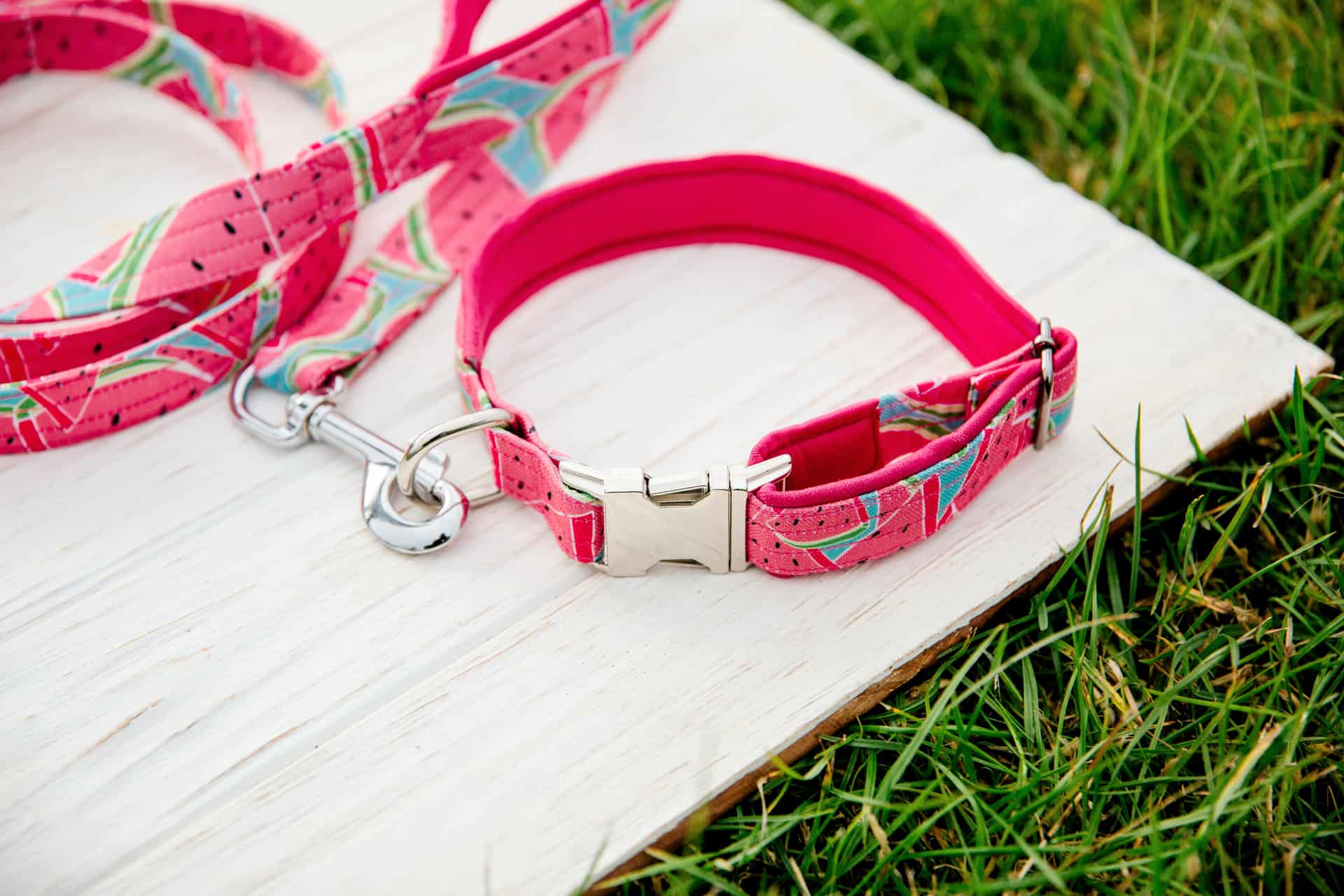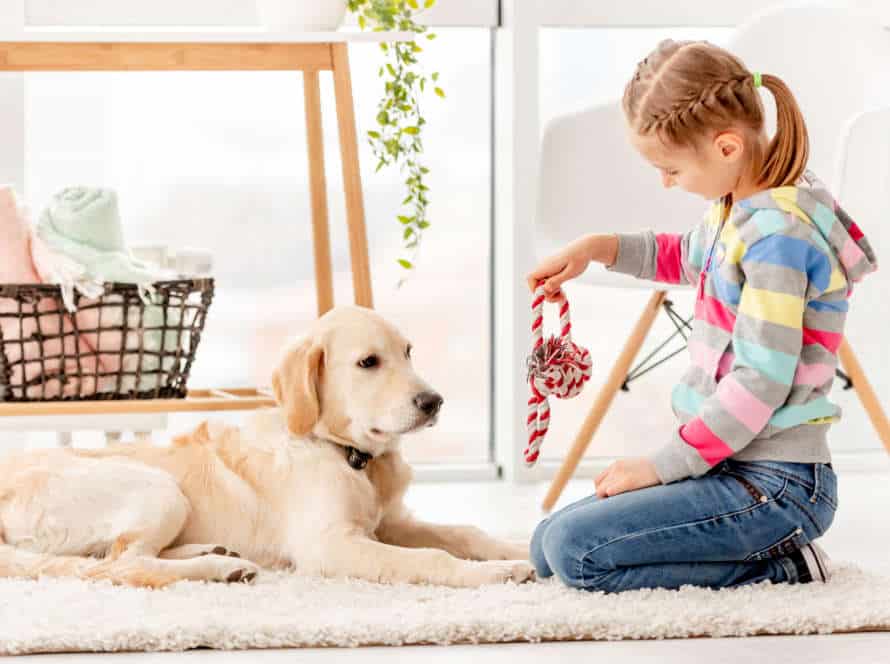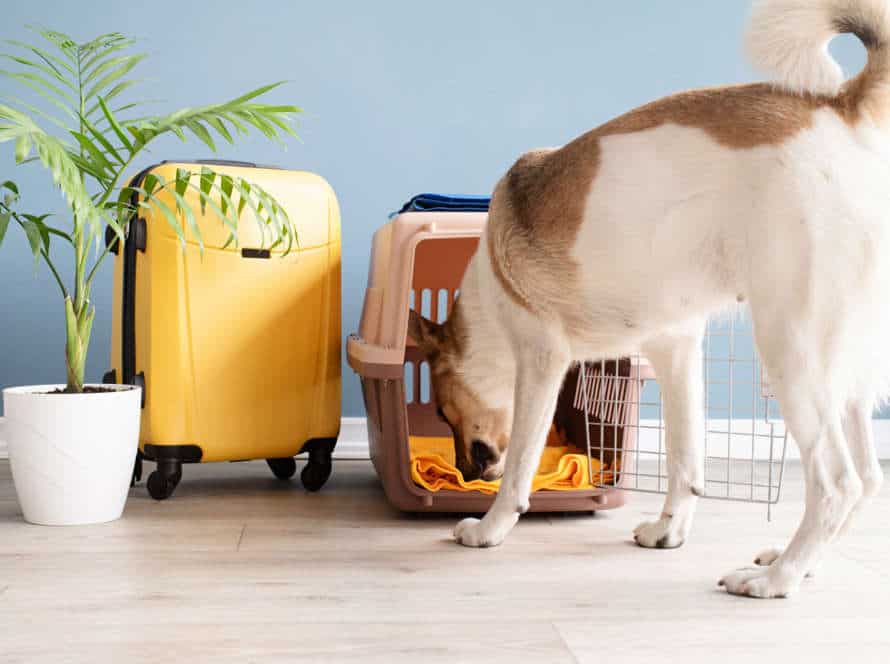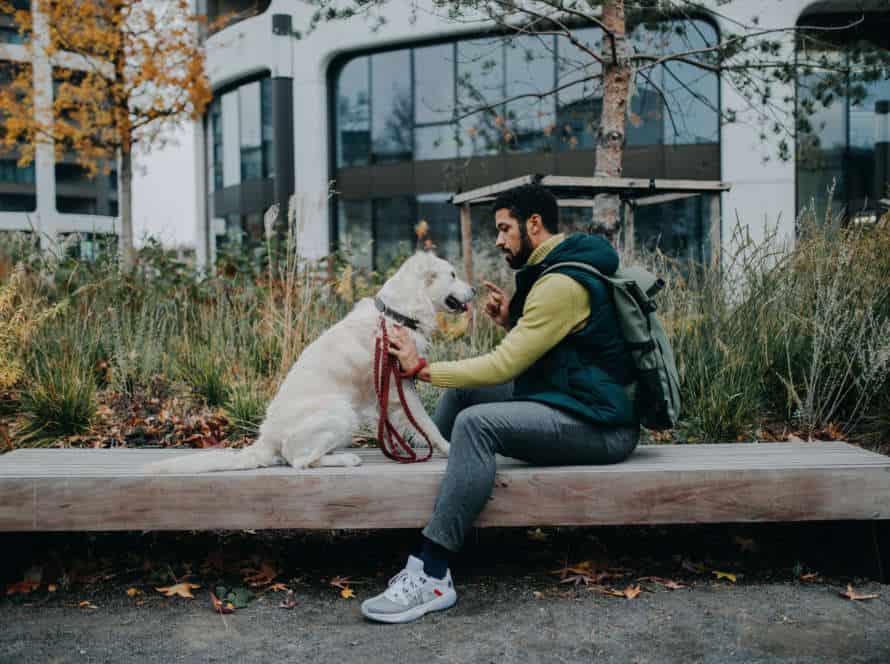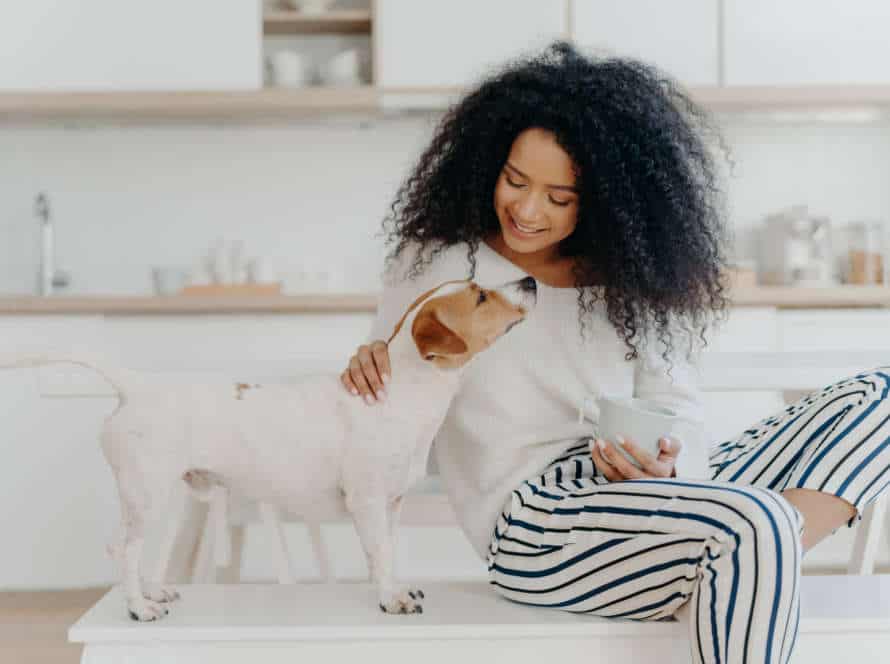Choosing the Right Leash and Collar for Your Dog’s Training Needs
Choosing the right leash and collar for your pup’s training matters. Here are the factors to consider:
- Leash Material: Nylon and leather are great for everyday use and training. Chain leashes are best for chewing or pulling.
- Length: Popular lengths are 4, 6, and 8 feet. Short leashes give better control. Longer leashes provide more freedom.
- Collar Type: Flat collars are common and good for everyday use. Martingale collars work for pups that slip out of collars. Choke collars should only be used with a pro trainer.
- Fit: Your pup should be able to move but not slip out.
Keep these points in mind to ensure success in training and a happy pup!
Factors to Consider When Choosing a Leash:
Picking the ideal leash and collar for your pup’s training is an essential choice. Different styles and sizes of leashes exist. Knowing what to search for will help you pick the correct one. Here are the factors you must consider when selecting a leash for your dog’s training:
Length of the Leash
The leash length can vary. Most are 4 to 6 feet long. But, you can pick one that fits your pup’s needs.
A shorter one is great for teaching the dog to stay close. It keeps them from jumping or running away.
A longer one gives them more room to sniff around. This is good for recall and coming when called.
Think about the breed and training goals. A trained pup might be fine with a longer lead. But, a young or hyper pup may need a smaller one for control.
Pro Tip: Choose a leash with a strong clasp and good quality materials. That way, your pup will stay safe.
Material of the Leash
Choosing the right leash material is important. It affects the durability, strength, and performance. Consider these factors:
- Nylon: Light, cheap & come in colors. But, can fray & not great for chewers.
- Leather: Durable, stylish & more comfy with use. More expensive & need maintenance.
- Chain: Strong, long-lasting & great for chewers. But, heavy, noisy & not great for training.
- Rope: Durable, easy to handle & perfect for outdoor activities. But, pricey & wear down over time.
- Reflective: Reflective material for nighttime walks. Ensures safety.
Consider your dog’s size, activity level & training needs when selecting the material.
Type of Clip on the Leash
When it comes to leashes, clip type matters. Bolt snaps and trigger snaps are the two most common. Bolt snaps are solid metal, secure and require two hands to attach. Great for larger, pulling dogs. Trigger snaps are easier to attach with one hand, good for smaller dogs. But they can come undone more easily. Consider your dog’s size/behavior and your own dexterity. The most important thing is that the clip holds fast and keeps your pup secure.
Types of Leashes:
Picking the ideal leash for your pup’s training needs can be overwhelming. Various leashes are available; from the typical 6-foot leash to a retractable one, and even specialized leashes for certain activities. In this article, we’ll discuss the different types of leashes and their advantages and disadvantages.
Standard Leash
Standard leashes are great for walking and training your pup. They usually come in lengths of 4-8ft with materials like leather, nylon, and chain. They’re great for newly-adopted dogs, those with behavioral issues, and those not trained to walk on a loose leash.
The standard leash keeps the dog close to you and allows for quick corrections and reinforcements. When selecting a leash, look at the size and breed of your pup, their level of distraction, and their behavior towards others.
A good collar or harness is also essential for comfort and security. With the right leash and collar/harness, you and your pup can have a safe and comfortable experience.
Retractable Leash
Retractable leashes, also called flexi leashes, give dogs more freedom. But, think about the risks before choosing one.
Less control, tangles and trouble in emergencies are some of the downsides. Before selecting, consider your dog’s training and environment.
A standard leash or a training leash with a fixed length could be better for training.
Retractable leashes could be good for leisurely walks in open spaces.
Consult your vet or a pro dog trainer for the best leash for your pup.
Martingale Leash
The Martingale leash is a perfect collar for dogs that tend to pull or have slender heads and necks. It gives greater control, so they won’t slip out easily.
It’s composed of two loops. The bigger one goes around the dog’s neck, and the smaller one tightens gently when the pup pulls.
It’s made from soft and long-lasting materials such as nylon, polyester, or leather. It also comes in multiple sizes and colors.
The Martingale leash is ideal for dog training, walks, and obedience classes.
To use it properly, make sure the collar fits the neck comfortably without choking the pup. It must loosen when the dog stops pulling.
Remember: always supervise your furry pal while using the Martingale leash. This will help avoid choking or accidents.
Factors to Consider When Choosing a Collar:
Selecting the ideal leash and collar for your pup’s training may be challenging. To guarantee your dog is comfy and safe, you must consider its size, temperament, and activity level. There are many collars that can suit your pup’s requirements. When deciding on the correct collar for your pup, think about the material, fit, and function. Let’s delve deeper into these points.
The Size of your Dog
Selecting the right leash and collar for your pup’s training is super important. Size is a primary factor to think about. Make sure it fits correctly. This avoids discomfort and choking hazards. Measure your pup’s neck. Add two inches for comfort.
Here are some collar types to consider:
- Small dogs: Lightweight and thin collars made of nylon or leather.
- Medium-sized dogs: Adjustable collars with wider bands made of leather or neoprene.
- Large dogs: Wide and sturdy collars with padding for added comfort and support.
Match the size and strength of your pup for the leash too. Make sure the collar and leash fit correctly and are comfy for your furry friend.
The Strength of your Dog
The strength of your pup is key when picking a collar for training. You need to make sure it’s strong enough to keep your dog in check without hurting them. Here are some things to remember when selecting a collar and leash:
- Material: Get one made from long-lasting stuff like leather, nylon or polyester – strong enough to handle the strength and force of your pup’s pulls.
- Width: Heavier and stronger dogs need wider collars, so the pressure and force will be evenly spread over a larger area, avoiding choking or injury.
- Type: Choose one that matches your dog’s temperament and training needs – like a flat collar, martingale collar, prong collar or harness.
- Strength: Make sure the collar and leash can take the size and strength of your dog; it must be able to take the pressure and force of their pulling.
It’s essential to pick the right collar and leash for your dog’s strength and training requirements. That way, they’ll be safe and comfortable during their training sessions.
The Training Goals of your Dog
Training your pup can have many aims, based on breed, age, and behavior. When selecting the perfect collar and leash for your pup’s training needs, there are several factors to think about. Things like size, age, temperament, and behavior of the dog.
Make sure to get a collar of the right size and enough control. Consider these goals when buying a collar:
- Barking, aggression, and pulling.
- Taking your pup on travels.
- Obeying commands and basic training.
- Exercise and walking.
The type of collar impacts the results of training. Pick a collar that supplies the needed level of control and fits your pup’s training goals. Pro Tip – Retractable leashes help your pup come when called by giving them more freedom.
Types of Collars:
Picking the right collar and leash for your pup is essential! There are several to choose from. Slip collars, martingale collars, and buckle collars are all options. Each one has its own purpose and benefits. Let’s look at what they can do for your pup’s training.
Flat Collar
A flat collar is a basic type of dog collar. It’s simple and is used for everyday wear. It fits around the neck and can be made from nylon, leather or cotton. It’s usually fastened with a buckle or snap and is adjustable. It’s great for dogs without behavior issues, and for identification. Not recommended for dogs with neck injuries, breathing problems or those that pull excessively.
Always make sure the collar fits snugly. You should be able to fit two fingers between the collar and the neck.
Martingale Collar
The Martingale collar, also known as a limited-slip collar, is a great tool for dog training. It prevents the pup from slipping out and choking without having to use too much force. When the pup pulls, the collar tightens, but as soon as it stops, it loosens again.
This type of collar has to be properly fitted so it’s not too tight or uncomfortable for the dog. Leave enough room to fit one or two fingers between the collar and their skin.
Always supervise your dog while using the Martingale collar to be safe.
Prong Collar
Prong collars, also known as pinch collars, are a type of training collar used to manage lead-responsive dogs. When used incorrectly, they can be painful and dangerous. But, when used correctly, they can be a useful tool for obedience training.
Here are some tips to keep in mind:
- Use a prong collar with blunt prongs, not sharp ones.
- Make sure the collar fits right – only two fingers of space between the dog’s neck and the collar.
- Don’t yank or pull hard on the leash while using a prong collar.
- Ask a professional dog trainer for help before using a prong collar.
Remember, prong collars should only be used short-term for training – not as a long-term solution for leash-reactive behavior.
Choosing the Right Combination of Leash and Collar for Your Dog
To train your pup, the right leash and collar combo is key. A perfect fit can make training simpler for you and your dog. There are loads of materials and types to choose from. Do your research to get the best match for your pup’s needs!
Matching the Right Leash and Collar to Fit Your Dog’s Size and Strength
Choosing the right leash and collar for your pup is super important. For smaller, lighter dogs, go for a 10-15 ft nylon leash and collar. This is great for basic training and helps avoid accidents. For medium-sized dogs, a 15-20 ft nylon or leather collar and leash is more robust and gives them more freedom. Bigger pooches need a heavy-duty leather or chain collar and a shorter leash of 6 ft or less for better control. For aggressive doggos, use a prong collar and a 4-6 ft metal leash. Always be aware of your pup’s size and strength, and adjust the equipment accordingly. Get help from trainers and pet professionals to make sure you’re using the right combo!
Choosing the Correct Leash and Collar Based on Your Training Goals
Choosing the right leash and collar for training your pup is key to success. It’s important to know the different types of collars and leashes available and their uses.
Collars:
- Flat collars are standard and good for everyday use. They can hold tags too.
- Martingale collars fit smaller heads and stop them from slipping out if they pull.
- Prong collars are for training. They use prongs to stop pulling. Only use them with professional guidance.
Leashes:
- Standard leashes are for daily walks.
- Retractable leashes give more freedom.
- Training leashes are longer and ideal for obedience training.
Pick one that fits your pup and your training goals to get the best results. Pro tip: consult a professional trainer to help you choose!
Incorporating Positive Reinforcement Techniques for Training Purposes
Incorporating positive reinforcement can be super effective for dog training. To get the best outcome, you need to pick the right leash and collar for your pup. Here are some tips:
- For basic obedience training, a flat collar and a leash that’s 4-6 feet long is great. It’ll let you guide your dog gently.
- For pulling, a harness at the front of the leash can help. Also, a martingale, choke chain or other training collar can be useful.
- For anxiety or fear issues, calming collars or a Gentle Leader head halter could help your pup feel more relaxed.
Remember, every dog is different, so you might have to try various collars and leashes to find the best fit!
Frequently Asked Questions
Q: What type of leash is best for my dog’s training needs?
A: The best leash for your dog’s training needs depends on the specific training goals and the size and behavior of your dog. A standard leash of about 6 feet is typically suitable for most obedience training, while a retractable leash may be better for loose leash training or allowing your dog more freedom on walks.
Q: What collar should I choose for my dog’s training?
A: The type of collar you choose for your dog’s training depends on the specific training goals and the size and behavior of your dog. A flat collar is typically used for basic obedience training, while a martingale or slip collar may be more appropriate for leash training and preventing pulling.
Q: Is it okay to use a shock collar for dog training?
A: The use of a shock collar for dog training is controversial and not recommended by many professional trainers. These collars can cause physical and emotional harm to dogs, and positive reinforcement methods are a safer and more effective way to train your dog.
Q: How can I ensure that my dog is comfortable with their collar and leash?
A: It’s important to introduce your dog to their collar and leash gradually and positively. Start by letting them sniff and examine the equipment before putting it on, then practice wearing the collar and leash indoors before venturing outside. Offer treats and praise to help your dog associate their collar and leash with positive experiences.
Q: Can I use a harness instead of a collar for my dog’s training?
A: A harness can be a suitable alternative to a collar for dog training, especially for dogs that pull on the leash or have neck or throat issues. However, the type of harness you choose should be based on your dog’s individual needs and training goals.
Q: How often should I replace my dog’s collar and leash?
A: Collars and leashes should be checked regularly for wear and tear, and replaced as needed to ensure their safety and effectiveness. It’s also a good idea to upgrade to a larger size or more suitable type of collar or leash as your dog grows and their training needs change.

